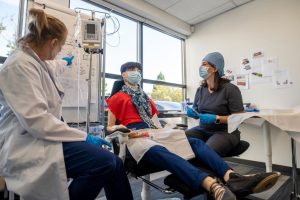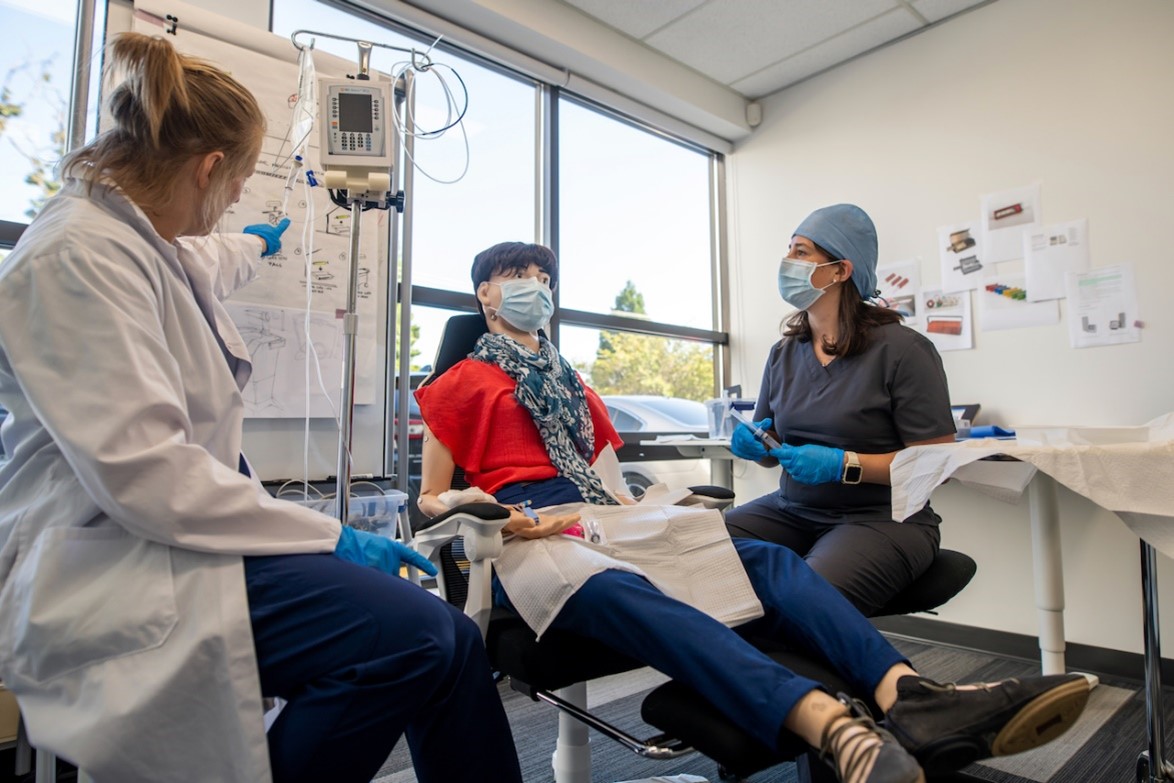 Visual rhetoric and emotional interaction in Medical Devices
Visual rhetoric and emotional interaction in Medical Devices
Frequently in the medical device industry, the tangible importance of the aesthetic design of an object can be downplayed. It can be considered dressing or fluff and not important in the development of the device. However, aesthetic personality, visual rhetoric or emotional interaction with a medical device influence the experience that an operator and a patient have with the device.
Emotional interaction refers to the unconscious reaction that someone has when they see or touch the device. This is an instant reaction to an object that is not informed by actual ability or performance and frequently can occur before any functional experience. This interaction can influence someone’s concept of the quality of a product, the anticipated ability of its performance or even their mental state when using the device or having it used on them.
When we acknowledge the impact of a device’s aesthetic and address it appropriately, we can expect not only better adoption but greater compliance, improved usability and even improved clinical outcomes.
So, the question becomes how do we create a positive emotional interaction with a medical device?
The first step in this process is understanding users’ needs and desires. In order to do this, we must go into the field and speak with the operators and patients that will be interacting with the device. This involves working closely with the Human Factors Engineers.
Facilitated conversations and activities uncover the perceptions that users have in relation to a specific procedure or medical condition. It is important to listen to what they say and the terminology they use to understand their emotional state and expectations. Always ask “why?” For example, a conversation with a patient about to receive an MRI may go like this…
HF – “How do you feel about having to get an MRI?”
Patient – “I’m anxious and nervous. A little scared and intimidated. I mean it seems pretty claustrophobic and I might feel trapped in there.”
HF – “Why are you feeling scared? Could you elaborate on that a bit?”
Patient – “Well, depending on the outcome, my life could go very differently. What that machine says is going to influence my life going forward.”
Our initial reaction to the anxiety response may be that the patient is anxious about the procedure itself. By following up we learned that the anxiety stems from a trust or mistrust in the ability of the device itself. This simple nuance can tell us that, while it should be inviting, the aesthetic personality of the MRI device should also appear credible and professional, thus helping to instill a sense of trust in the device and its abilities.
Following up on surface level responses and digging deeper helps us to understand the nuance of someone’s emotional state. When we understand the nuance of someone’s emotional state, we can design an object that better addresses or caters to their desires.
 StarFish Medical HF Engineer speaking with user.
StarFish Medical HF Engineer speaking with user.
The perceived ability of a device refers to the emotional reaction that someone may have when they look at a device. This is important for healthcare providers as they need to trust in the ability of the devices they are using. It is also important for patients as they need to trust the outcome. This can be achieved through combining design elements in a variety of ways. To communicate a precise, predictable and reliable design, consider material choice (metal finishes may be perceived as high quality and accurate), a use of geometrically derived forms (to appear more reliable and predictable) and crisp surface transitions (hard edges communicate precision).
The converse of this would be using soft materials for touchpoints. Silicone or Thermoplastic elastomers (TPE) will suggest comfort. Organic, biological forms would suggest a dynamicism and ambiguousness, and soft surface transitions suggest approachability.

In addition to the design elements we choose, the most important aspect of aesthetic design to suggest quality is consistency in the design elements. The elements and proportions should be applied consistently through the entire design. Providing a credible, high quality and finished aesthetic language re-enforces the perceived trust someone has in the device.
Hospital beds are historically constructed of steel tubing resembling a cage. Typically, when a patient has to spend periods of time in a hospital bed, they can feel imprisoned. The design choices of these beds can re-enforce that sense of confinement. Whether through softer lines, cleaner, more clinical color palettes, or pleasantly tactile materials, we can shift the perception of a typical patient bed.

Comparison of three hospital beds. Does one feel more reliable than the others? Does one feel less confining? Does one feel “cleaner?”
Many times, when designing a medical device we run into the challenge of having multiple users for that object. Frequently we will have an operator (a care giver) and a patient (a care receiver). The challenge of designing for multiple users is that often each user will have a unique desire for the emotional interaction with the device.
So, how do we appeal to the unique emotional perceptions of different users in the same device? When designing the AutoRic Remote Ischemic Conditioning unit we ran into just such a challenge. The operator (an EMT, ER physician or cardiac surgeon) needed a precise device that was easy to use in a high anxiety environment and durably reliable. The patient, in a high-anxiety state, needed a comfortable, approachable yet reliable device. In order to achieve this, we needed to design two separate yet integrated interfaces.
 The patient’s emotional interface needed to be approachable, comfortable and reliable.
The patient’s emotional interface needed to be approachable, comfortable and reliable.
The operator’s emotional interface needed to be precise, easy to use and durable.
The mating interface between the two user emotional interfaces integrates elements from each. The form is soft and flowing, consistent in surface application from one to the other. Crisp edges at the mating surfaces help re-enforce the sense of robustness and precision.
To design a device that will make a meaningful impact on patient’s and users lives, we have to thoughtfully consider the visual language and aesthetic design. From being informed by end users to understanding which design elements will appropriately communicate emotionally with them, aesthetic design is a detailed and refined process. Applying Industrial Design rigour to the forms of the devices we design, helps to ensure safety, compliance and better patient outcomes.
Images: StarFish Medical
Mike Loveless is a Senior Industrial Designer at StarFish Medical. Based in Toronto, Mike studied Industrial Design at Humber College and has 15 years experience in consumer product design working both freelance and with full service design firms. Translating user and patient insight is part of a series of blogs with tips, tricks and nuanced techniques that Mike has learned in conducting qualitative user research.
- SEO Powered Content & PR Distribution. Get Amplified Today.
- PlatoData.Network Vertical Generative Ai. Empower Yourself. Access Here.
- PlatoAiStream. Web3 Intelligence. Knowledge Amplified. Access Here.
- PlatoESG. Carbon, CleanTech, Energy, Environment, Solar, Waste Management. Access Here.
- PlatoHealth. Biotech and Clinical Trials Intelligence. Access Here.
- Source: https://starfishmedical.com/blog/how-to-improve-emotional-interaction-with-a-medical-device/



